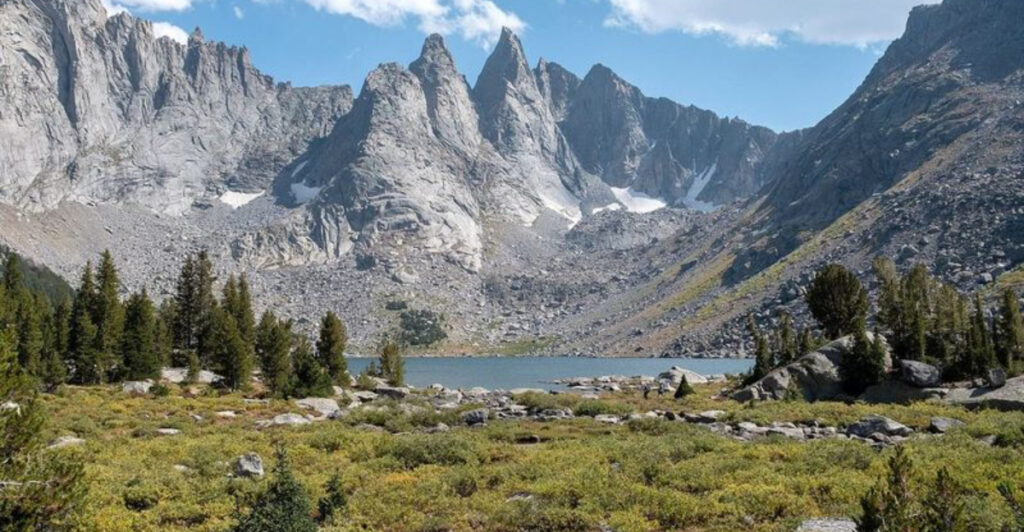Tucked away in Wyoming’s western wilderness lies Pinedale, a small town with an outsized reputation among outdoor enthusiasts. This hidden gem sits between the tourist hub of Jackson and the city of Casper, serving as a gateway to the magnificent Wind River Range. With over 1,300 alpine lakes surrounding it and fewer than 2,000 residents, Pinedale offers authentic Wyoming experiences without the crowds.
Gateway to Wilderness Adventures
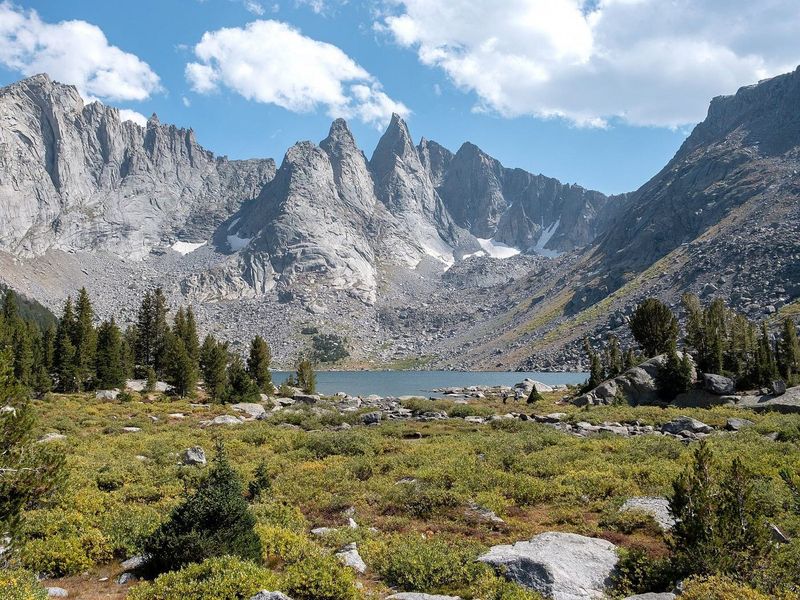
Standing at 7,182 feet elevation, Pinedale serves as the perfect basecamp for some of America’s most pristine wilderness explorations. The town’s location grants immediate access to the Wind River Range, where granite peaks scrape the sky and wildlife roams freely across vast expanses of protected land. Summer months transform the surrounding landscape into a hiker’s paradise with over 600 miles of trails ranging from easy lakeside strolls to challenging mountain ascents.
The Continental Divide Trail passes nearby, attracting long-distance hikers who often stop in Pinedale to resupply and rest. Local outfitters offer guided backpacking trips for those wanting to explore the backcountry with experienced leaders familiar with the terrain’s hidden gems. Many visitors initially plan short visits but extend their stays after discovering the seemingly endless network of trails.
Skyline Drive provides a more accessible taste of the mountains, climbing to nearly 9,000 feet with panoramic views that showcase the vastness of Wyoming’s landscape. During wildflower season (typically July through August), alpine meadows explode with colorful blooms including Indian paintbrush, Wyoming’s state flower. The relatively short growing season makes this natural display particularly special.
Rock climbers flock to the area for world-class routes, particularly in the Cirque of the Towers, a horseshoe-shaped valley ringed by dramatic granite spires. This climbing mecca requires a substantial hike to reach but rewards visitors with some of the most spectacular alpine scenery in North America. Even non-climbers make the journey simply to witness this natural amphitheater’s grandeur.
Winter transforms Pinedale into a snow-sports destination with significantly fewer crowds than Jackson Hole. Snowmobilers enjoy over 300 miles of groomed trails, while cross-country skiers glide through silent forests on meticulously maintained tracks. White Pine Ski Resort offers downhill skiing with affordable lift tickets and minimal wait times – a refreshing alternative to Wyoming’s more commercialized ski areas.
What makes Pinedale truly special is how the wilderness infiltrates everyday life. Residents share stories of moose wandering down Main Street or bald eagles soaring overhead during morning commutes. This constant connection to nature creates a community that deeply values conservation and sustainable recreation, ensuring these wilderness experiences remain available for generations to come.
Fremont Lake: Wyoming’s Alpine Jewel
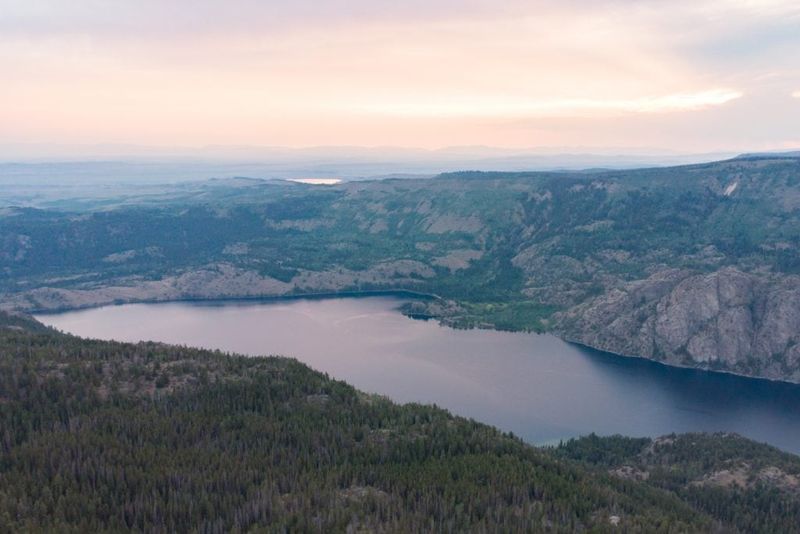
Stretching twelve miles long and plunging to depths of nearly 700 feet, Fremont Lake stands as Wyoming’s second-largest natural lake and Pinedale’s aquatic crown jewel. This massive glacial lake formed approximately 20,000 years ago when massive ice sheets carved out the landscape, leaving behind a pristine body of water that now serves as both recreation hub and vital ecosystem. Crystal-clear waters reflect the surrounding mountains, creating postcard-worthy scenes that change with each passing hour as light plays across the landscape.
Anglers consider Fremont Lake a trophy destination, particularly for lake trout that regularly exceed 20 pounds. The lake’s exceptional depth and cold water create perfect conditions for these massive fish, along with rainbow trout, brown trout, and kokanee salmon. Local fishing guides share generational knowledge of productive spots, though many visitors prefer simply renting a boat and exploring the lake’s extensive shoreline at their own pace.
Summer days bring sailors and motorboats to the lake’s surface, though the expansive size means it rarely feels crowded. Lakeside picnic areas provide perfect spots for family gatherings, while brave swimmers test themselves against the chilly waters – even in August, temperatures rarely climb above 65 degrees. The Fremont Lake Campground offers coveted sites with lake views, though reservations are essential during peak season.
Photographers gravitate to the lake during golden hour when the Wind River peaks reflect perfectly in the calm morning waters. The lake’s north-south orientation creates dramatic lighting conditions, particularly when storm clouds gather over the mountains. Wildlife sightings around the shoreline include osprey diving for fish, moose wading in shallow bays, and occasional black bears foraging in berry patches.
Winter transforms Fremont Lake into an ice fishing destination, though experts warn visitors about potentially dangerous conditions – the lake’s unique hydrology means certain areas may never completely freeze. Snowshoers and cross-country skiers follow shoreline trails, enjoying the serene winter landscape far from crowds.
Beyond recreation, Fremont Lake serves as Pinedale’s municipal water source, requiring no filtration due to its exceptional purity. This direct connection between wilderness and community daily life exemplifies the town’s harmonious relationship with its natural surroundings. Environmental protection efforts remain paramount, with local conservation groups monitoring water quality and advocating for responsible development practices around the watershed. For many Pinedale residents, Fremont Lake represents not just a beautiful backyard playground but a vital lifeline connecting them to Wyoming’s pristine natural heritage.
Rich Mountain Man Heritage
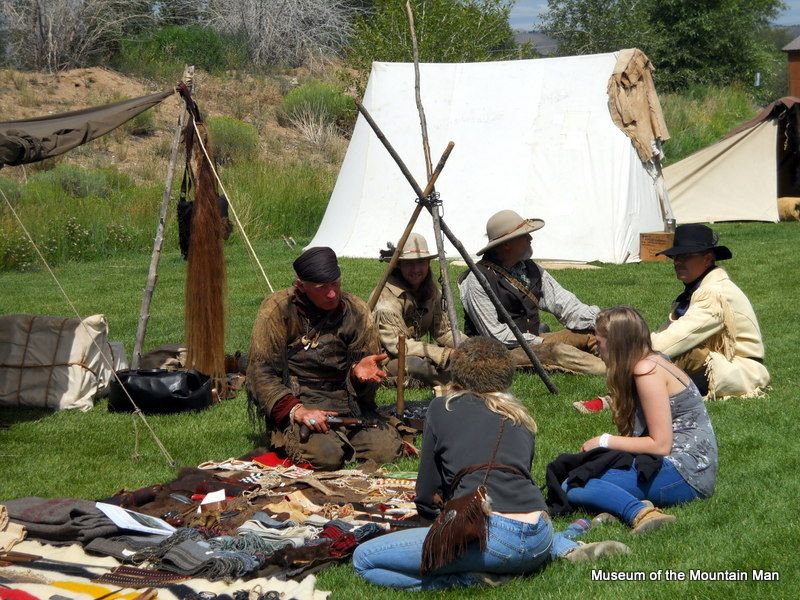
Pinedale proudly preserves the rugged legacy of the mountain men who first explored Wyoming’s wilderness in the early 19th century. Fur trappers and traders gathered annually at the Green River Rendezvous near present-day Pinedale, establishing one of the West’s most significant commercial and cultural exchanges. These gatherings brought together trappers, Native Americans, and suppliers for weeks of trading, socializing, and storytelling that shaped America’s western expansion.
The Museum of the Mountain Man stands as the town’s cultural centerpiece, housing an impressive collection of artifacts including Jim Bridger’s rifle and original journals from the rendezvous era. Interactive exhibits bring to life the challenging existence these early explorers faced, from navigating treacherous mountain passes to establishing relationships with indigenous peoples. Visitors consistently express surprise at the museum’s quality, often comparing it favorably to similar institutions in much larger cities.
Every July, Pinedale celebrates this heritage with the Green River Rendezvous Days festival. The event features black powder shooting competitions, traditional skills demonstrations, and historical reenactments where participants dress in period-accurate clothing. Local residents take particular pride in maintaining historical accuracy, creating an immersive experience that educates while entertaining.
Beyond organized events, mountain man history permeates the town’s identity through place names, architectural details, and local businesses. Streets bear names like Bridger Avenue and Sublette Street, honoring famous trappers who traversed these mountains. Public art throughout downtown depicts scenes from rendezvous gatherings and wilderness expeditions, serving as daily reminders of the area’s historical significance.
Guided history tours take visitors to actual rendezvous sites where archaeologists have uncovered trade beads, broken clay pipes, and other evidence of these historic gatherings. Standing in these meadows, visitors can envision the colorful encampments that once transformed the quiet valley into bustling marketplaces. Interpretive signs help visitors understand how geographical features influenced historical events and shaped settlement patterns.
This connection to mountain man heritage influences Pinedale’s modern character, fostering a community that values self-reliance, outdoor skills, and respect for the land. Local schools incorporate this history into their curriculum, ensuring younger generations understand their town’s significant role in western expansion. Unlike more commercialized historic destinations, Pinedale’s approach feels authentic and deeply rooted in genuine appreciation rather than tourist-focused exploitation. The mountain men’s legacy of adaptation to challenging environments continues to inspire residents facing contemporary challenges in this remote, high-elevation community.
Wildlife Corridor and Ecological Significance
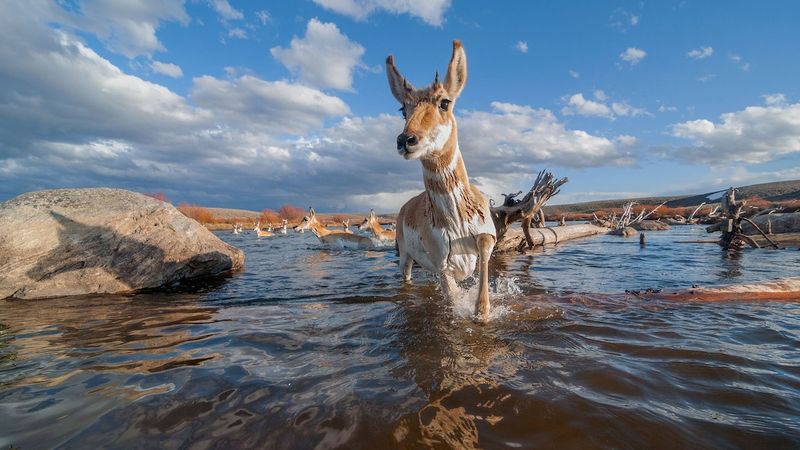
Pinedale sits at the heart of one of North America’s most intact wildlife corridors, where ancient migration routes still function much as they have for thousands of years. The Path of the Pronghorn, America’s first federally designated wildlife migration corridor, passes near town as these remarkable animals journey over 150 miles between summer and winter ranges. Pronghorn, often mistakenly called antelope, have traversed this route for at least 6,000 years, making it one of the continent’s oldest known wildlife migrations.
Grizzly bears roam the mountains surrounding Pinedale, part of the Greater Yellowstone Ecosystem that represents one of the last strongholds for these magnificent predators in the lower 48 states. Conservation efforts have helped the population recover from dangerously low numbers, though human-wildlife conflicts remain an ongoing challenge. Local residents have adapted to life in bear country, using bear-resistant garbage containers and maintaining awareness when hiking or camping.
Massive elk herds move through the region seasonally, their bugling calls echoing through autumn valleys during the rut. Wyoming Game and Fish Department biologists conduct important research on these herds, tracking population health and movement patterns that inform management decisions. Winter brings these majestic animals to lower elevations where they can sometimes be spotted from highways and designated wildlife viewing areas.
Moose frequently appear within town limits, particularly during harsh winter months when they seek refuge from deep mountain snow. These encounters highlight the permeable boundary between wilderness and community that characterizes life in Pinedale. Residents maintain a respectful distance, understanding that these powerful animals require space despite their seemingly docile appearance.
The ecological significance of the Pinedale area extends beyond charismatic megafauna to include rare plant communities, endemic fish species, and critical wetland habitats. The Kendall Warm Springs dace, found nowhere else on Earth, inhabits a single thermal spring system near Pinedale, highlighting the area’s unique biodiversity. Conservation organizations work closely with landowners to protect migration corridors through conservation easements and habitat improvement projects.
Climate change presents growing challenges to this delicate ecosystem, with warming temperatures affecting snowpack, water availability, and vegetation patterns. Local scientists monitor these changes, providing valuable data that contributes to broader understanding of climate impacts in mountain environments. Community-based conservation initiatives engage residents in citizen science projects tracking everything from butterfly populations to stream conditions, fostering environmental stewardship while gathering important ecological information. This combination of scientific research and community involvement creates a model for how rural communities can participate in meaningful conservation work.

